Keywords: Epidermolysis bullosa (EB), case report, homeopathic therapy
BACKGROUND
Epidermolysis bullosa (EB), also called ‘Butterfly disease’ is a group of rare inherited genetic disorders (either autosomal dominant or recessive) with breakdown of epidermal and dermal integrity, resulting in an extremely fragile skin and recurrent blisters.
The subtypes of EB based on the morphological level of blister formation are – epidermolysis bullosa simplex (EBS – blistering in frictional areas), junctional epidermolysis bullosa (JEB – generalized blistering in areas of skin and mucous membranes between lamina lucida and basement membrane), dystrophic epidermolysis bullosa (DEB – generalized blistering in areas of skin below basement membrane) and kindler epidermolysis bullosa (KEB – patterns of mixed skin disunion).1
The etiology of EB is identified with mutations in genes encoding proteins of the keratin filaments, desmosomes, hemidesmosomes and other molecules; and over 20 such gene mutations are identified till date.1,2
Although the mutations are diverse, the pathological manifestation of EB remains stereotypical. It is characterized by severe to mild forms of cutaneous fragility leading to bleeding of the area occurring with minimal or no trauma, accompanied by blister formation at various sites of skin and mucous membrane depending upon the subtype of EB and extracutaneous features like scarring alopecia or hypotrichosis and nail distortions.3
EB is diagnosed clinically and or through invasive techniques like immunofluorescence mapping (most common diagnostic procedure) and transmission electron microscopy, genetic testing like next-generation sequencing, Sanger sequencing and whole-exome sequencing.4–6
The prevalence of EB is still unspecified, but it is reported that globally EB affects 50 births per million live births. Out of these, EBS affects 92%, DEB – 5%, JEB – 2%, and KEB – 1% of the cases. The pediatric age group are the general target of this condition, from infancy to adolescence.7 The prognosis of the condition is considered poor due to increased death rates during infancy or early childhood on account of sepsis and or esophageal stricture .7
The management of EB is primarily controlling infection, by preventing further formation of blisters and erosions through wound care and by lancing-draining blisters, coupled with oral administration of antibiotics and antiseptics.
Systemic treatment is by administering anti-epileptics with anti-collagen properties and other anti-inflammatory drugs.8,9 In the recent decades, gene therapy is recognized as an effective approach in the treatment of EB involving gene editing and gene insertion, but with potential risks.10,11
With the necessity for alternative therapies being high, homeopathy may be investigated for its benefit in cases like EB. We present a case of a 9-year-old girl with EB since birth, diagnosed clinically and treated with individualized classical homeopathic therapy. The child was on various forms of conventional management before homeopathic treatment, but with little benefit.
CASE REPORT
Female, 9 years old
Initial consultation – 05 July 2021
Main complaint: itching and bleeding of skin with formation of wound and blisters on both legs, arms, abdomen and back.
Background information
EB (most likely EBS) since birth, the doctors assured there was no cure and asked her to pay attention to hygiene. During birth there was no layer of skin formed on her legs and they bled during birth. Initially she had itchy eruptions followed by wound formation only on legs and mildly on the abdomen.
Currently
The child’s parents divorced 6 months ago and after this incident, blisters started spreading to arms, hands and back with very itchy skin at night causing sleeplessness for 2-3 hours. The skin bled from scratching followed by wound formation. Tomatoes, chocolate, chips and fried foods aggravated the itching.
On asking the child about her emotions regarding her parent’s divorce, she said she was afraid, that someone would kidnap her or hurt her since she was no longer with a father to protect her. She often dreamt of being kidnapped or that her mother is dead.
On further enquiring about the dreams, she narrated that when she was a baby someone tried to kidnap her from her bed, but her father saved her. Later, on asking the family about this incident, they confirmed that such an incident never occurred, but she had fantasized and strongly believed in the same, probably because she was very afraid.
Aggravation due to heat and frightening easily brings the probability of Pulsatilla, but she was very thirsty. On asking her what she did while she was afraid, she said she would cry and liked to be consoled at such times.
Symptoms taken into totality:
– Skin eruptions bleeding +
– Skin chapping +
– Skin eruptions desquamating +
– Consolation amel +++
– Weeping easily ++
– Frightened easily ++
– Warmth agg +++
Repertorization:
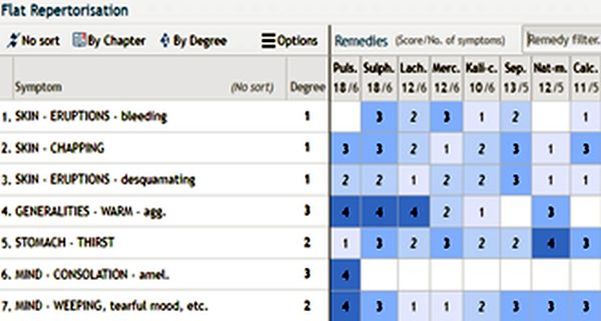
Prescription: Pulsatilla 200C
Level of health: 7-8 (the pathology is deep and considered incurable and present by birth, but at the age 6-7, she had acute high fever twice from tonsillitis, which points to the possibility of a better health level).
Follow ups
Date Follow up Prescription
06/07/2021 After Pulsatilla 200C, at night she woke up from sleep with severe itching and cried for hours.
In the following days, the itching decreased, but the eruptions on the back and abdomen aggravated.
After this the wounds started to heal. nil
12/08/2021 Symptoms amel – Thirst, pressure in the chest on going to a hot room, weeping listening to music, excessive appetite and being uncomfortable when water is poured on the head.
Weeping increased but fears reduced.
Slight pain in the left auricle with a wound.
Burning in the throat and heart while running, like reflux burns.
Aggravation from heat better.
Burning of wounds while washing reduced.
Skin fragility and bleeding with minor trauma reduced.
No cavities in left tooth, but pain remains.
Distorted nails and slow growth of nails (after a minor physical trauma) is better and now the nails are growing.
Thickening of nails better.
Emotionally she feels safe and protected and does not think about being kidnapped.
nil
Outcome
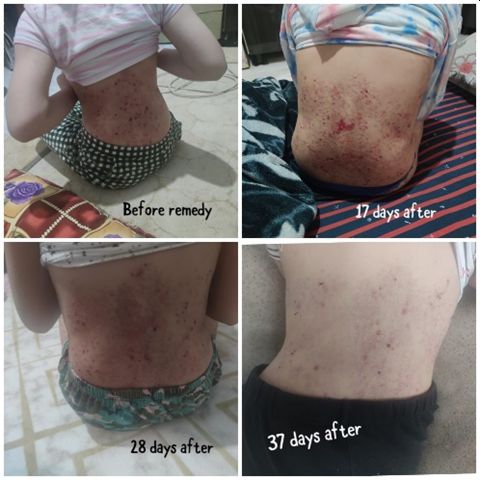
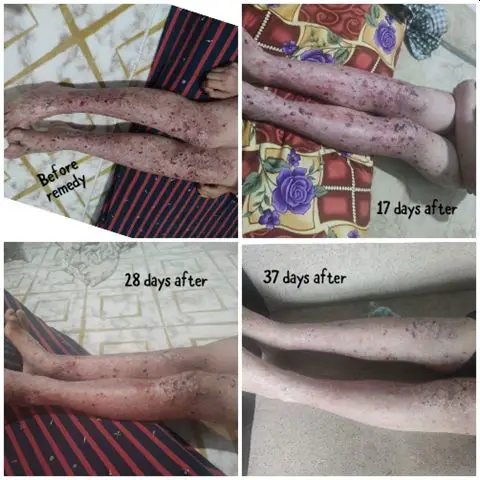
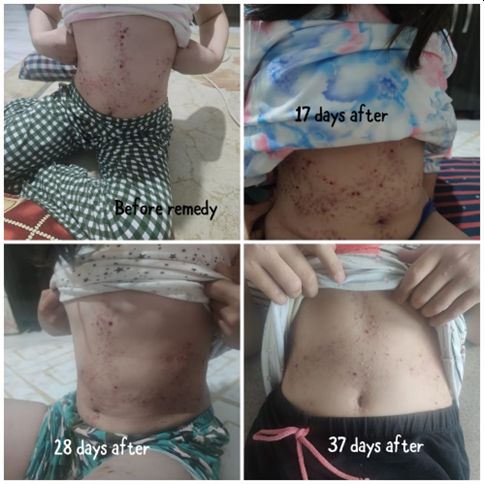
DISCUSSION
EB is considered an incurable disorder with a reduced life expectancy. The immune system in such case is heavily compromised, and it is a challenge to address these cases or even produce the slightest improvement, except through immunosuppression.
Homeopathy is a unique system of medicine that individualizes the cases and fundamentally achieves cure by addressing the immune system. The satisfactory results are accomplished by a meticulous case taking procedure and arriving at a simillimum,12 as seen in this case report.
The child suffered from EB since birth, but the symptoms steadily worsened after her parent’s separation, leaving the child in a frightened state. The child constantly felt that her safety was under threat, where she could no longer discriminate fact from imagination.
İt was necessary to address this state of mind which served for the progression of her pathology. Once Pulsatilla 200C – single dose was given, the organism produced an initial aggravation of the skin, eventually followed by amelioration of the skin and promotion of skin clearance – the desired direction after a homeopathic remedy.13 Concurrently, the emotional level of the child started getting better, where she was able to relax and felt less threatened.
It is impressive how the defense mechanism reacted with just a single dose of remedy with a moderate potency (200C), where generally such cases with deep pathology call forth remedies in lower potency (even 3C or 12 C), requiring frequent repetition.12–14
This is where the knowledge of theory of Levels of Health (LOH)15 takes effect. By practically applying LOH theory, we can evaluate that the child’s immune system is not completely deteriorated, as we expect to happen in such deep pathologies.
This is evidenced by the presence of high fever in the child’s history, which is never the case in lowest levels of health. Further, the appearance of aggravation followed by an amelioration after the remedy, points towards an immune system that is poised for cure.
The therapy, of course, is still on-going and to claim a complete cure, we must see the shift of health level (unlike conventional therapy). The author hopes to give the follow up future as the cure progresses.
CONCLUSION
The case report illustrated here, treated with individualized classical homeopathy, provides a significant alternative therapy for challenging disorders like EB. More studies are necessary in this regard to further prove the efficacy of homeopathic therapy.
REFERENCE
1. A B, L B-T, ILC C, et al. Epidermolysis bullosa. Nat Rev Dis Prim. 2020;6(1). doi:10.1038/S41572-020-0210-0
2. Prodinger C, Reichelt J, Bauer JW, Laimer M. Epidermolysis bullosa: Advances in research and treatment. Exp Dermatol. 2019;28(10):1176. doi:10.1111/EXD.13979
3. C H, L L, MC B, et al. Clinical practice guidelines for laboratory diagnosis of epidermolysis bullosa. Br J Dermatol. 2020;182(3):574-592. doi:10.1111/BJD.18128
4. LM M, AE K, JA F, M S, U M, L S-F. Gene panel for the diagnosis of epidermolysis bullosa: proposal for a viable and efficient approach. An Bras Dermatol. 2021;96(2):155-162. doi:10.1016/J.ABD.2020.05.015
5. VK Y, N B, SB R, et al. Diagnosis of Inherited Epidermolysis Bullosa in Resource-Limited Settings: Immunohistochemistry Revisited. Dermatology. 2017;233(4):326-332. doi:10.1159/000478856
6. C H, J F. Inherited epidermolysis bullosa: New diagnostics and new clinical phenotypes. Exp Dermatol. 2019;28(10):1146-1152. doi:10.1111/EXD.13668
7. JD F. Epidemiology of Inherited Epidermolysis Bullosa Based on Incidence and Prevalence Estimates From the National Epidermolysis Bullosa Registry. JAMA dermatology. 2016;152(11):1231-1238. doi:10.1001/JAMADERMATOL.2016.2473
8. PM P, VA J, TN M, KT A. A Review Comparing International Guidelines for the Management of Bullous Pemphigoid, Pemphigoid Gestationis, Mucous Membrane Pemphigoid, and Epidermolysis Bullosa Acquisita. Am J Clin Dermatol. 2020;21(4):557-565. doi:10.1007/S40257-020-00513-3
9. L B-T. Newer Treatment Modalities in Epidermolysis Bullosa. Indian Dermatol Online J. 2019;10(3):244. doi:10.4103/IDOJ.IDOJ_287_18
10. K T, J U. Stem Cell Therapy for Epidermolysis Bullosa-Does It Work? J Invest Dermatol. 2016;136(11):2119-2121. doi:10.1016/J.JID.2016.07.004
11. EM M, U K, G P, M DL, JW B. Advances in Gene/Cell Therapy in Epidermolysis Bullosa. Keio J Med. 2015;64(2):21-25. doi:10.2302/KJM.2014-0013-RE
12. Hahnemann S DR and BW. Organon of Medicine. Kolkata Modern Homeopathic Publication; 2013.
13. J.T.Kent. Lectures on Homeopathic Philosphy. B.Jain Publishers (P) LTD
14. Vithoulkas G and Tiller W. The Science of Homeopathy.; 2009.
15. Vithoulkas G. Levels of Health.; 2017.




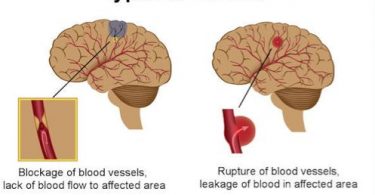
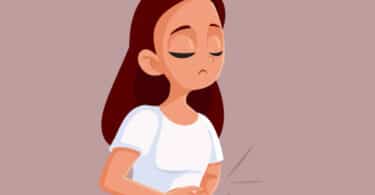
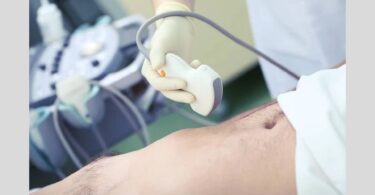
in case you said skin bled after scratching but you took rubric different as well as there is no any pqrs symptom except consolation amel but it is comman in children any way good case with good result.
my analysis
1 mental insecurity
2 eruption bleeding after scratching
3 chocolate and tomatoes agg
remedy is triticum vulgare.
if case is relapsed think of it
It is not common for a child to feel fear and cry and consolation amel at such times. I’ve also seen in a few of my pediatric patients that consolation makes them worse. pathology in the patient’s mental-emotional state trivializes the physical rubrics. Thanks for the suggestion. I haven’t shared the 2nd fu yet, but the patient’s leg skin has started to normalize. I will continue to follow developments 🙏🏼
That’s a really great case with really good response where allopathic treatment shows no positive result.. Proud of you and classical homeopathy. Great learning case. Thanks for sharing this wonderful case.
Dr. Sandip Gaikwad INDIA Pune
Thank you for sharing this case! Will definitely be interested to see how the case progresses further!
Epidermolyse Bullosa, informatia interesanta
the pulsatilla is accurate constitutional remedy.as her mental make up.phycicals like repeated infections of skin .
. cantharis will be her specific remedy for bullous lesions.